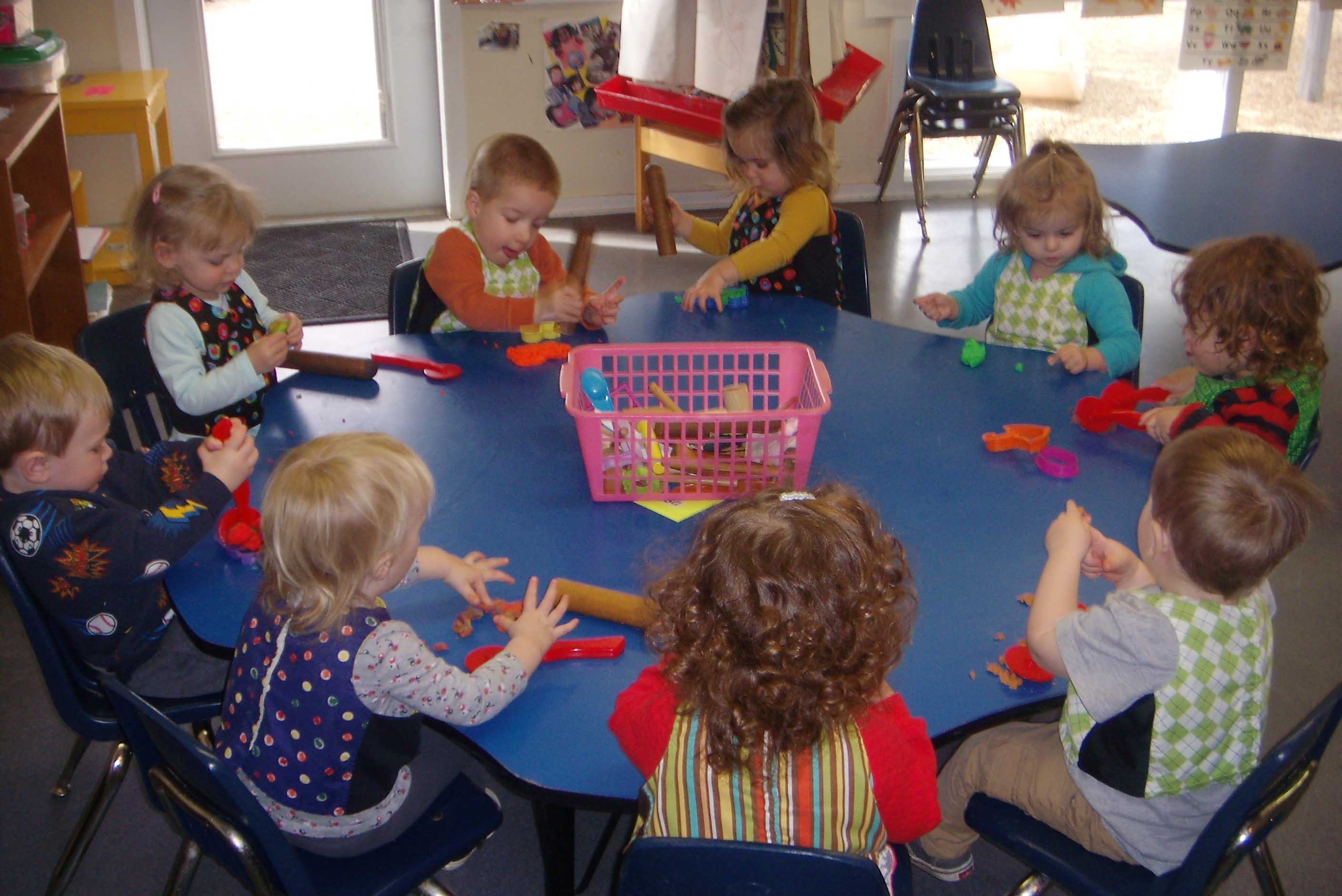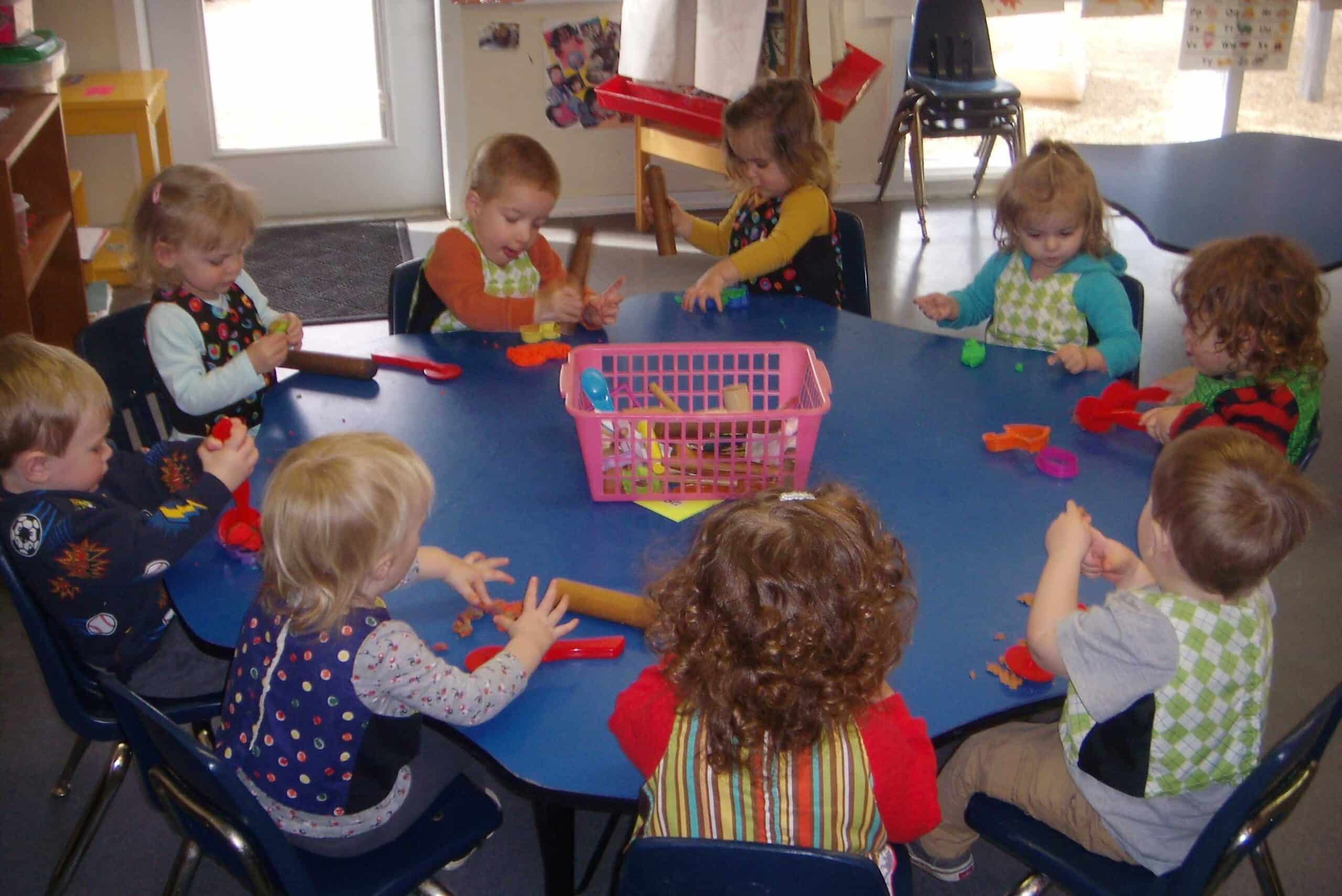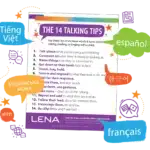 In 2017, LENA partnered with Teaching Strategies® to explore the effectiveness of using The Creative Curriculum® for Infants, Toddlers, & Twos together with LENA Grow, LENA’s professional development model for early childhood educators.
In 2017, LENA partnered with Teaching Strategies® to explore the effectiveness of using The Creative Curriculum® for Infants, Toddlers, & Twos together with LENA Grow, LENA’s professional development model for early childhood educators.
During the four-month pilot, which was conducted in two early childhood classrooms in central Virginia, children wore a LENA device one day each week. The resulting LENA Grow reports, which educators reviewed together with a Teaching Strategies coach, provided a complete picture of the classroom’s audio environment, including the amount of interactive talk each child experienced.
“The reports really showed teachers that throughout a whole day, there are multiple times when children are getting changed or sitting down for a meal or a snack, and a lot of those times engagement can be lost if you aren’t being cognizant of how you are using that time or interacting with that child,” said Jennifer Tubb, a Research Associate at Teaching Strategies who coached the educators throughout the pilot.
Using the LENA Grow reports, Ms. Tubb was able to help the educators identify lower talk times, and then use The Creative Curriculum® components to help them engage with children more.
“It has even helped my coaching to be more intentional,” Ms. Tubb said. “Using LENA data, I was able to go in and coach using specific curriculum resources at a specific time of day, and my being intentional was guiding the teachers to be more thoughtful about how they were using the curriculum.”
The results of the pilot showed notable gains in words and conversational turns from initial baseline recordings. In one classroom, an impressive 87.5 percent of children experienced an increase in either words or turns. The pilot also showed that providing teachers with coaching and implementation support leads to effective delivery of the curriculum.
Why does early language matter, and how do we address the challenges associated with increasing interactive talk?
In this webinar, we discuss why classroom language matters, where we stand, and the challenges and opportunities associated with increasing interactions.
Another key realization the educators had was that background noise in their classrooms could be a barrier to engagement and interactive talk. After seeing their reports, they began to reduce the amount of time they played CDs or had other white noise going on in the background.
“I saw the teachers look at the graphs and see that there was much more background noise happening while they were doing other activities than they realized,” said Ms. Tubb. “They were saying, ‘That’s when we were reading a story; I didn’t know there was so much other background noise going on.'”
Still, not all of the educators immediately embraced the idea of having talk measured in their classrooms. Ms. Tubb said she saw some resistance and concerns from the educators at first, even though they had gone through training and knew that all the audio captured by the LENA device was completely private and could never be listened to.
“Teachers are very protective of their space and feel they know how to engage with the children and they know the curriculum resources,” she said. “They were standoffish and defensive at first, but by the second or third report, they had some a-ha moments that there were times they needed to wait and give the children time to communicate rather than jumping in and giving direction. They were very open to suggestions and seeing the data. When they felt comfortable that I was there to support and not critique, they were more receptive to my suggestions and modeling and specific resources. They started to see that it was a lot easier than they expected.”
But the real transformation was in the engagement between educators and children.
“I started seeing more connection between the teachers and the children, because the teachers were speaking more and being more meaningful in those engagements. I also started seeing the children go to the teacher and interact more with them because they weren’t being talked to, they were being talked with,” Ms. Tubb said.
To learn more, read the full press release on the pilot results or download the project paper.
[about]




